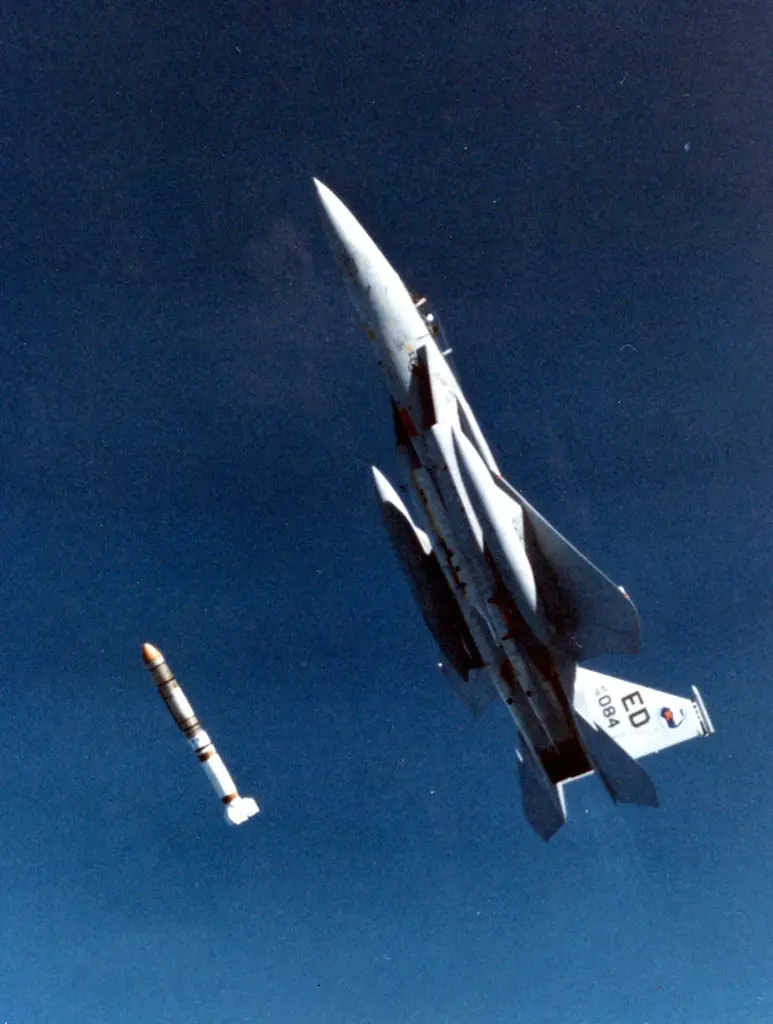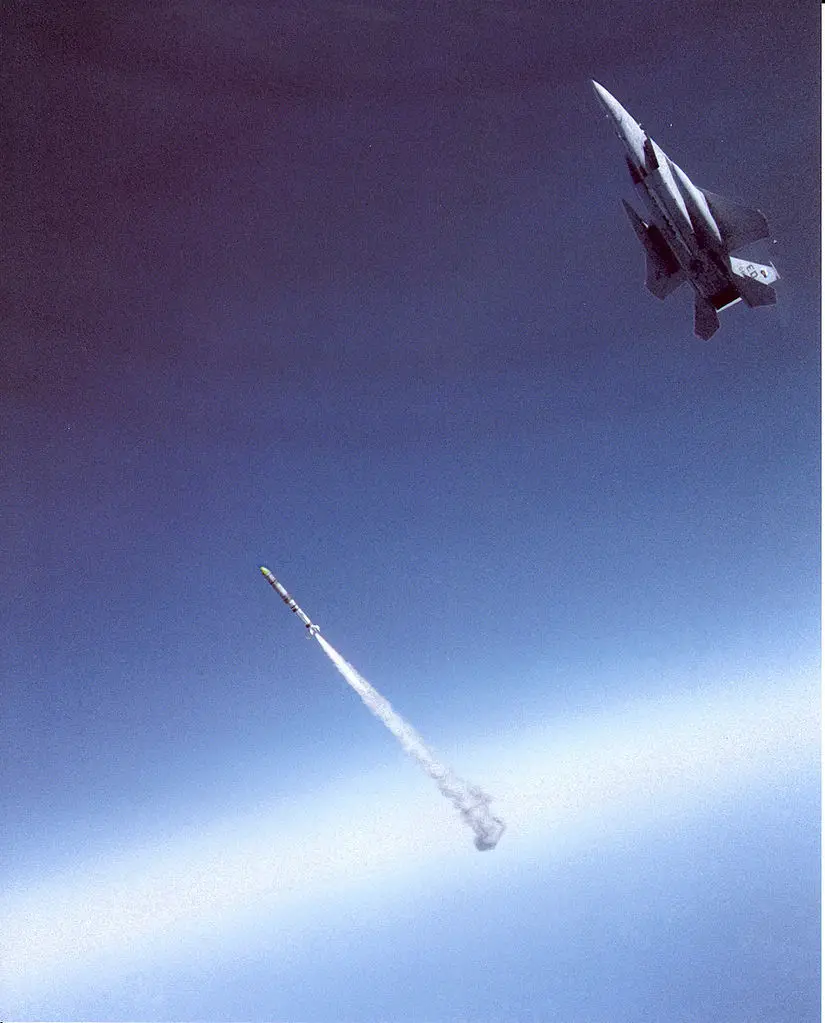On September 13, 1985, U.S. Air Force pilot, Major Wilbert “Doug” Pearson, shot down a satellite while piloting an F-15A Eagle fighter aircraft. He became the first pilot ever to do so.
Pearson’s mission, dubbed the “Celestial Eagle Flight,” took place over the Pacific Ocean. He flew his F-15A Eagle to a height of 38,100 feet and launched an ASM-135 ASAT anti-satellite missile at a defunct orbiting satellite. The satellite that was targeted was the Solwind P78–1, a solar laboratory which had been launched in 1979.
Pearson flew at Mach 1.22 to the target site and then put the aircraft in a 3.8g, 65-degree climb at Mach 0.934. The ASAT missile was then automatically fired at the satellite orbiting 345 miles above the earth. The 2,700 pound, 18-foot long missile flew to the target and then separated, sending a rocket with a miniature homing vehicle on a course to collide with the satellite at 15,000 mph.
This wasn’t the first time an attempt had been made at shooting down a satellite. In the late 1950s, the United States came out with its first anti-satellite system called Bold Orion. This rocket was launched from a B-47 Stratojet at a satellite called Explorer 6 in 1959. While it didn’t connect with the satellite, it came close, within four miles at an altitude of 156 miles above the earth.
The pilot and the airplane of the “Celestial Eagle Flight” parted ways after the historic flight, but 22 years later, Pearson’s son, U.S. Air Force pilot Captain Todd Pearson, piloted the same aircraft during a commemorative flight to mark the day when his father became the first pilot to shoot down a satellite. Captain Pearson even wore the same patch on his left shoulder that his father had 22 years before.
Sources: Air & Space Magazine, Live Science, Air Force



